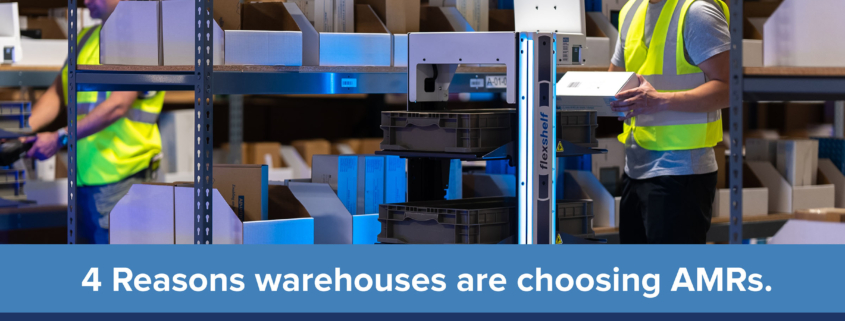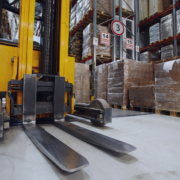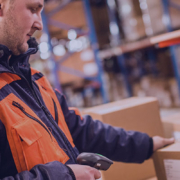Warehouse robotics has long been pinpointed as a disruptive force to reshape the face of modernized warehousing. Now seen as an indispensable support for the changing workforce, robotics investments have surpassed $22 million worldwide, illustrating the digital transformation in today’s supply chains. While e-commerce and shortages have been responsible for most supply chain shifts, AMR adoption can be traced back to a few common factors such as:
- Rise in SKU numbers – As more e-commerce stores open, more products flood supply chains, increasing order throughput rates within smaller workforce pools.
- Steady increase in labor expenses – Studies show that labor expenses account for over 60% of total operating costs, surpassing rent, utility, and technology expenses. As labor shortages continue to affect industries, these expenses are only set to continue.
- Higher likelihood of worker injuries – Around five in a hundred workers are expected to get injured while on the job per year per warehouse. While that may seem like a small probability, one injury can cost companies up to $38,000 in direct costs alone.
- Higher likelihood of mixed pallets – With warehouse spaces also increasing in rental price, facilities are more likely to store mixed pallets and split cases to ensure greater product variety. This may create future complications as workers must travel farther throughout the facility to assemble orders.
How do AMRs fit into new warehouse challenges
As customer expectations continue to shift over time, new challenges are only expected to rise. Consequently, intelligent AMR fleets such as the ones built by Zebra’s Fetch Robotics improve modernization strategies by working alongside other future-forward technologies to…
- Automatically differentiate similar products with RFID scanning during the pick process. Because tags store multiple codes at once, RFID data capture empowers teams by directing AMRs fleets to the correct location based on captured and shared data via the WMS.
- Reduce employee travel time around the warehouse with roller-top AMRs that meet picking teams in designated locations. In doing so, teams no longer need to move between aisles since AMRs can just bring the order to them for picking and then move the pallet to the next step of the order fulfillment process.
- Prevent worker injuries that stem from carrying heavy loads or traveling down the same routes as forklifts and other heavy machinery. Next-generation AMRs are equipped with sensitive motion sensors to spot workers and avoid collisions.
- Track split cases for streamlined picking via your preferred handheld device. Since AMRs can carry up to 600 pounds per device, multiple orders can be transported at once, increasing order throughput while navigating through different pallets with less errors.
An efficient robotics solution is often accompanied by several supporting technologies to simplify deployment and streamline workflows for less bottlenecks. The first step to modernization is a careful in-depth workflow assessment to outline needed technologies and goals within your solution. To learn more about how to get started, contact Avalon’s modernization experts.












